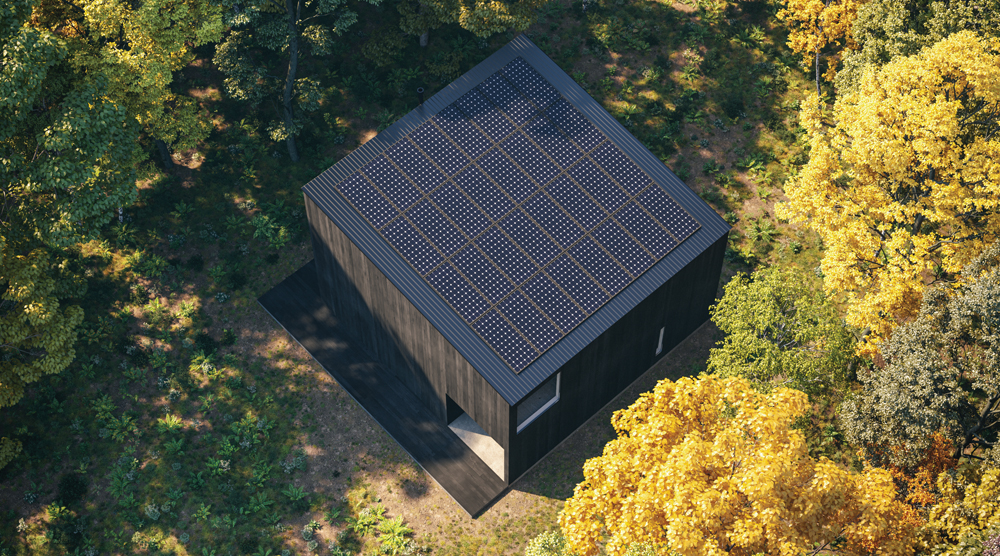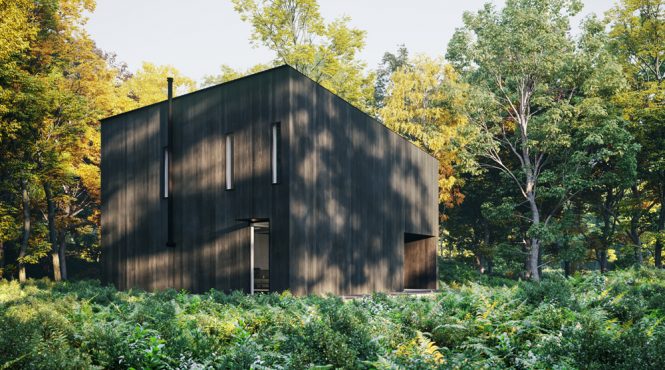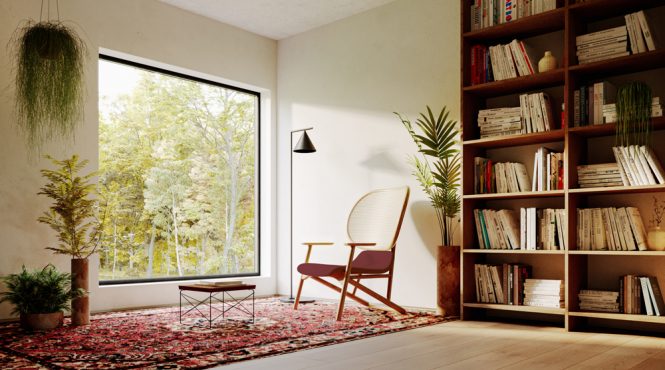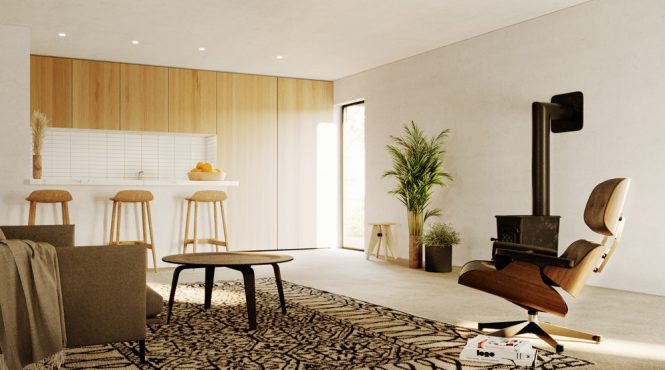Edifice Upstate: Invisible Architecture
A New Approach to Affordable Solar-Powered Homes
By Staff | Summer 2022 | Design Feature
In the Sullivan county hamlet of Roscoe, architect Marc Thorpe is piloting a sustainable building project that seeks to provide contemporary homes completely powered by solar energy at an affordable price point. Edifice Upstate is the design and build agency Thorpe has launched with his partner, Claire Pijoulat, a co-founder of WantedDesign, in collaboration with Kingston-based solar energy provider Solar Generation. A 1,000-square-foot prototype Edifice house will be completed this summer.
Ten years ago, the couple bought land in Roscoe and built a minimalist, 500-square-foot, off-grid cabin, looking for a simpler, remote lifestyle. The couple made the cabin their main residence during the pandemic and the larger concept of Edifice Upstate took shape. “We want to develop a turnkey solution for people who don’t want to spend a million dollars on a suburban development home,” says Thorpe. “We don’t need McMansions anymore.

There are four Edifice models in development, all completely solar-powered.
They range in size from a 500-square-foot, single-level cabin with one bedroom, one bath, kitchenette, and living room to a 2,000-square-foot, two-level house with three bedrooms, two baths, a full kitchen, and a study. Prices run from $250,000 to $450,000.

“We believe that we need to take responsibility for our energy consumption by taking control of our own power,” says Thorpe. “We should be building smaller, self-sustaining houses and focus on quality, not quantity. Our goal is to build a future systemically integrated with nature for ourselves, our children, and future generations.”
According to Thorpe, the set of original designs are not an end point but a direction in which to guide clients toward building self-sustaining homes using renewable technology. “We expect to appeal to people who want something modern, minimalist, and renewable,” Thorpe says. “We can start with these designs and generate more ideas that utilize solar. Solar is the key here—the houses are designed, especially the roofscape, specifically for the solar panels.”

Thorpe’s contention, borne out by the architecture, is that homes of the future should be less, not more. “It’s a bit of invisible architecture,” says Thorpe. “When you reduce a house’s footprint and are not sucking energy off the grid, you’re doing something that’s relatively invisible.”
